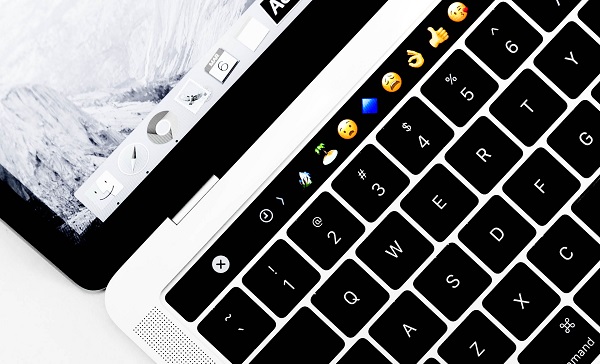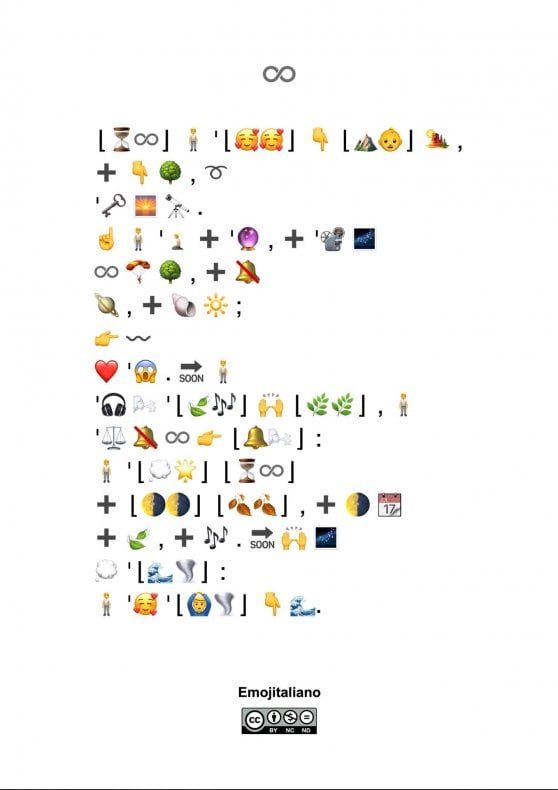Emojis & Email: The Latest, Their Impact on Clicks, and Optimization for Screen Readers

There must be a reason why wetalk about emojis so much, andare so attentive to new ones: those smiley faces characterize our dailycommunication much more than we think, bringing them to an iconographic and symbolic level accompanying the text.
This attentiveness has led neuro-scientists to study the language of emojis and detect its ability to generate more empathy than simple written word. It’s clearly unthinkable to ignore the phenomenon in the marketing field – especially its impact on the email channel -, where communication must rely on all the tools capable of improving public engagement.
To stay updated on the world of emojis,we’ve collected the latest news onthe topic, after which we examined their advantages and their actual effectiveness in emails, closing withsome tips to optimize them for the increasing number of emails read by screen readers.

From developing integrations to strategic support, from creating creative concepts to optimizing results.
News from the world of emojis
The Unicode consortium has anticipatedthat 117 new emojis will arriveby 2020: in detail, there will be 62new figures and 55 of their variants.

One of the top new emojis is the Made inItaly gesture of fingers pinchedtogether, which nevertheless is accompanied by some interpretationproblems: if in Italy and in most of the world it expresses the classic“What do you want?”, in other cultures it has a different meaning (itseems that in Middle Eastern countries it means “wait”).
The undertaking of researchers at theUniversity of Macerata is also noteworthy, who created a special version of Leopardi’s poem L’Infinito. Translated into manylanguages, now Leopardi’s poem can also boast having an emoji translation. Rather unusual!

The advantages of emojis in email subject lines
Why are emojis so influential in email marketing too? Simply becausethey have some significant advantages. At the level of the subject line,inserting emojis allows you to:
- Increase opening rates
According to an Experian report, 56% of the brands that use emojis in the subject lines of their emails get higher unique opening rates.
- Save space
Considering the ever-increasing number of emails opened on mobile devices, optimizing the length of the subject line is becoming a more and more decisive factor (the ideal length is between 30-40 characters). In this context, emojis let you condense the message, translating words and meanings into an icon.
- Convey an emotion
Connected to the previous point, emojis have the ability to convert meanings and messages into images, which is fundamental in a context of ultra-rapid use such as that of emails. Since establishing an emotional connection with your customers is crucial in marketing, emojis will increasingly be a key element of campaigns.
- Highlight the email in inboxes
Inboxes are increasingly crowded with messages, which means companies must continuously strive to make emails stand out in the eyes of the recipient. Take a look at the two examples below. Which of the two subject lines attracts the most attention?

Emojis in email bodies: the impact on performance
In addition to subject lines, emoji can alsobe used inside emails, inthe body of the message. The use of emojis is less common here because it’sharder for companies to integrate stylizedemoticons with more complex visualand graphic elements. Some do it very well, as the following email shows:

But what’s more interesting is understanding how emojis in the body of emails impact results. The findings of the MailUp Statistical Observatory come in handy, which measured the incidence of iconographic elements in recipients’ inboxes.
First of all, we discovered thatemojis are used more than dynamic fields (5%versus 4%): a surprising figure, unthinkable until a few years ago, and onewhich testifies to the increasing trust companies place in iconographicelements, seen as an effective accompaniment to the textual elements.
The Observatory reveals that emails withemojis in the subject line record higherunique click rates (9.3%), testifying that companies using emojis have agreater ability to communicate effectively, playing on the relationship betweengraphic and textual creativity also within the email, to generate engagement and stimulate responsiveness.
The data on the distribution of emojisamong the various audiences is interesting: B2B registers 7.6%reactivity (compared to 4% in subject lines without emojis). The sameoccurs in mixed and in B2C: 10% and 8.5% of CTOR,respectively.
Emojis are mainly used in DEM (8.6% of the total); their use in newsletter emails (3.9% of thetotal) and transactional emails (2.6% of the total) is lower. This distributionconfirms the tendency of emojis to be associated with commercial communications.
This connection of emojis and DEM has agood response among recipients, since promotional emails with emoticons in thesubject line record higher UORs(19%) than emails that don’t have them (17%).
An effective use of emojis also reflectsgreater, more widespread reactivity. In fact, we find that the benefits emojisbring are cross-cutting andconcern all three types of emails: newsletter, DEM and transactional, where the click rate is higher insubject lines containing one or more figurative elements.
It is distinctly clear that emojis, forDEM, are an element that can add a bettervisual impact to the subject line, offering an effective graphic complementto the textual content, to the full benefit of both openings and clicks.
How to optimize emails with emojis for screen readers
In email marketing there are more andmore discussions focusing on the issue of emailaccessibility.
What does that mean? Accessibility isthe design of emails aimed at guaranteeing all recipients – including thosewith disabilities (blindness,for example) or those who use assistivetechnologies (such as screenreaders) – full use of the message and all its contents.
Designers and marketers are becoming increasingly sensitive and aware of the theme, so much so that there are now real best practices on the subject (our post offers some of the necessary requisites for making email design accessible).
Combining the discussion of emojis withthat of accessibility, it’s clear that certain points must be resolved, withthe aim of having the emoticons inserted in emails make sense, even if read by screen readers. Becausewithout an appropriate optimization, how will the phrase “We ❤️email” be read by a screen reader? Like this: “We red heartemail”. Not a great result.
So here are some precautionary steps youcan take.
Emojis in the subject line
Subject lines add a furthercomplication: the emojis in the subject line are read by screen readers exactly as they are. Here’s twoexamples:
Boost your career with new online courses ? Claim your gift! ?
Screen readers will read the subjectline as follows:
Boost your career with new online courses rocket Claim your gift! wrapped gift
Since it is not technically possible toexclude emojis from the reading by screen readers, you have to carefullyevaluate which emoticon to insert, itsposition between the words and howthe emoji will be read by the assistive tool. We suggest alwaysconsulting this Unicodeguide, which collects all the verbaldescriptions of all the available emojis.
Emojis in the email body
As for the email body, companies havemore control over the reproduction of emojis via screen readers. In fact, theycan use the HTML code toindicate an action, to direct the vocal reproduction of the emoji. Here’s anexample:
We ❤️ email
As we have seen, without the appropriatemodifications, the screen reader will read “We red heart email”. Theemoji’s expressive potential thus becomes an interruption, an obstacle to understanding the text.
There are two possible optimizationshere:
1. Modify the emoji’s alt text
You can replace the description assigned by Unicode with one that best fits the meaning of the sentence. Here is the HTML code we can modify, changing the alternative text:
We <img src=”emoticon-heart.png” width=”22″ height=”22″ alt=”love” style=”display: inline; margin: 0; padding: 0; vertical-align: -5px;” border=”0″ /> email
The screen reader will read thefollowing sentence, preserving its comprehensibility:
We graphic love email!
2. Hide the emoji
You can also modify the code as follows:
We <span aria-hidden=”true”>❤️</span> email.
As you may have guessed, this should beused with caution toavoid compromising the meaning of the text. Using the same example, hiding theemoji in “We ❤️ email” is not the best solution, since the recipientwill be read a cut-off, meaningless sentence: “We email”.
We suggest only hiding emojis incircumstances where they have a purelydecorative role, meaning that when they’re not read out, it has no effecton the general sense of the text.
For example, in “Thanks ? from all the staff! ?“, hiding it inthe HTML code will have no effect on the meaning. On the other hand, if theemojis aren’t optimized, the screen reader would read, “Thanks clappinghands from all the staff clapping hands”, not your best option.
In conclusion
If you were wondering whether or notemojis are an effective expressive element for your emails, the advice is to experiment with an A/B test, which lets you compare twodifferent versions of the message (with or without emojis, in the subject lineand body of the text) and find out which email gets the highest open and clickrates.
You can learn more about the A/B test requesting a free trial of MailUp: you’ll have30 days to create, test, and send your emails.